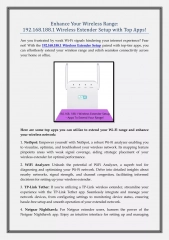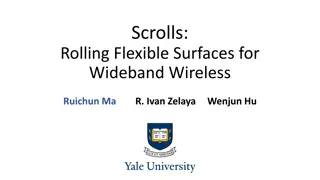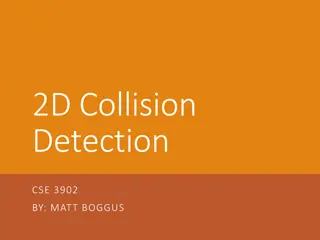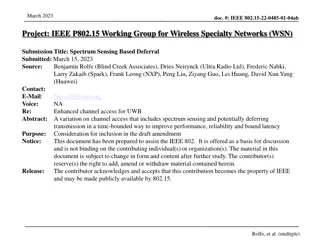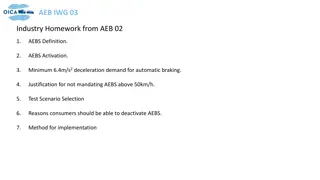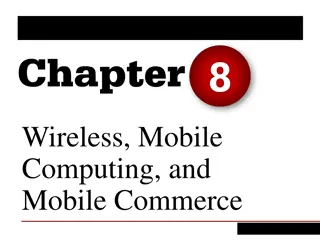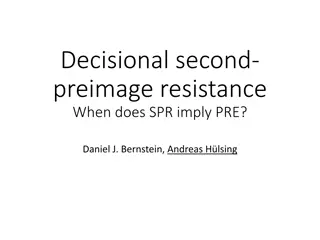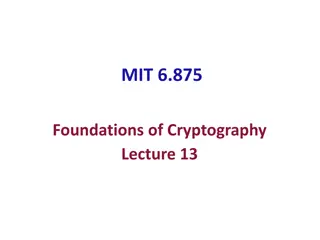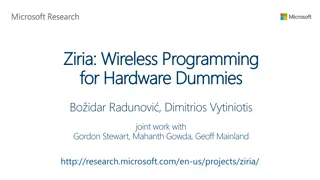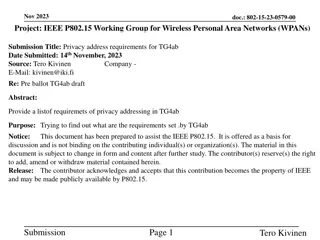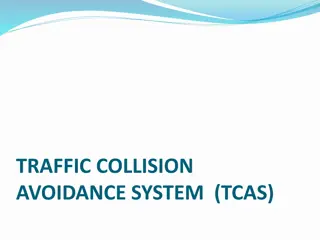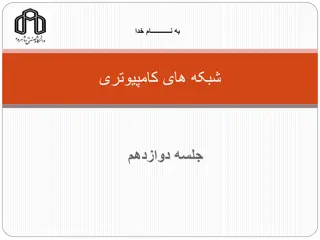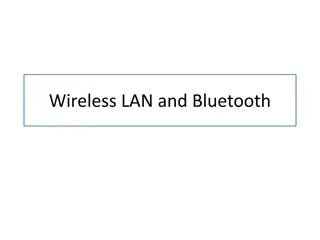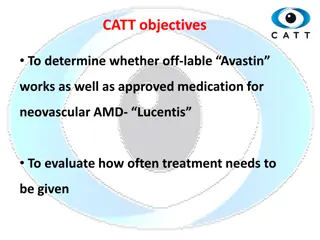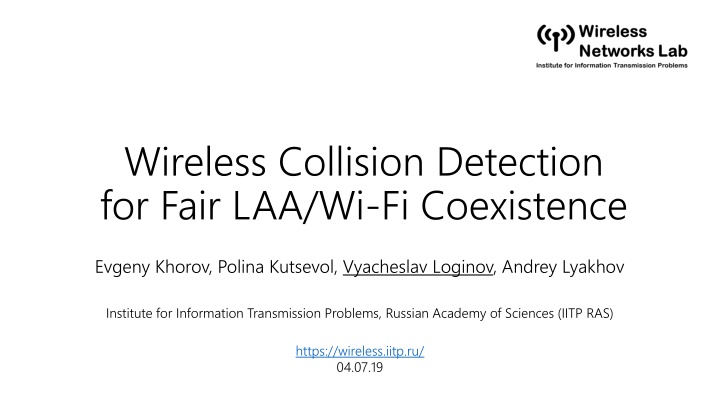
Wireless Collision Detection for Fair LAA/Wi-Fi Coexistence Research
Learn about the innovative research on wireless collision detection for ensuring fair coexistence between License-Assisted Access (LAA) and Wi-Fi networks. The study explores channel access methods, reservation signals, performance evaluation, and numerical results to optimize network efficiency and fairness.
Uploaded on | 1 Views
Download Presentation

Please find below an Image/Link to download the presentation.
The content on the website is provided AS IS for your information and personal use only. It may not be sold, licensed, or shared on other websites without obtaining consent from the author. If you encounter any issues during the download, it is possible that the publisher has removed the file from their server.
You are allowed to download the files provided on this website for personal or commercial use, subject to the condition that they are used lawfully. All files are the property of their respective owners.
The content on the website is provided AS IS for your information and personal use only. It may not be sold, licensed, or shared on other websites without obtaining consent from the author.
E N D
Presentation Transcript
Wireless Collision Detection for Fair LAA/Wi-Fi Coexistence Evgeny Khorov, Polina Kutsevol, Vyacheslav Loginov, Andrey Lyakhov Institute for Information Transmission Problems, Russian Academy of Sciences (IITP RAS) https://wireless.iitp.ru/ https://wireless.iitp.ru/ 04.07.19
Channel Access Methods in LAA and Wi-Fi Have much in common Both LBT in LAA and EDCA in Wi-Fi are CSMA/CA based 4 access categories Parameter values (AIFSN, CWmin, CWmax, backoff slot size) But have a lot of differences ED/PD rules Single threshold scheme in LAA, double threshold scheme in Wi-Fi TXOP (MCOT) duration Best Effort traffic: LAA 8ms, Wi-Fi 2.5ms Possible data frame start positions Wi-Fi STA may start data frame in an arbitrary moment of time thanks to frame preamble LAA eNB have to wait slot boundary in primary component carrier in licensed band 13-Apr- 25 https://wireless.iitp.ru/ https://wireless.iitp.ru/ Wireless Collision Detection for Fair LAA/Wi-Fi Coexistence 2
Reservation signal in LAA End of LBT backoff Possible frame start positions Possible solutions: 1. Keep silent before the slot boundary Other LAA/Wi-Fi station may occupy the channel Low LAA performance when coexisting with Wi-Fi stations DATA DATA Unlicensed CC time What should eNB do? 2. Send reservation signal (RS) Big overhead (up to 500us of airtime wasted) Unfair channel resource sharing Asymmetric collisions Licensed CC slot slot time subframe subframe LBT Slot = 9 us, LTE Slot = 500 us 13-Apr- 25 https://wireless.iitp.ru/ https://wireless.iitp.ru/ Wireless Collision Detection for Fair LAA/Wi-Fi Coexistence 3
Performance Evaluation [1] Two scenarios Reference: N+1 Wi-Fi STAs Coexistence: N Wi-Fi STAs and one LAA BS Traffic: saturated UDP sent with AC_BE KPI: per device throughput gain in the coexistence scenario comparing to the reference scenario Coexistence is assumed fair if throughput gain for both LAA and Wi-Fi is positive [1] Polina Kutsevol, Vyacheslav Loginov, Evgeny Khorov, Andrey Lyakhov. Analytical Study of License-Assisted Access in 5G Networks. // In proc. of IFIP Networking 2019, Warsaw, Poland, 20-22 May, 2019 13-Apr- 25 https://wireless.iitp.ru/ https://wireless.iitp.ru/ Wireless Collision Detection for Fair LAA/Wi-Fi Coexistence 4
Numerical Results With LAA reservation signal, channel resource sharing is unfair from the Wi-Fi point of view LAA has longer transmissions Asymmetric collisions when RTS is used Without LAA reservation signal, channel resource sharing is unfair from the LAA point of view High probability that some Wi-Fi STA occupies the channel during 13-Apr- 25 https://wireless.iitp.ru/ https://wireless.iitp.ru/ Wireless Collision Detection for Fair LAA/Wi-Fi Coexistence 5
Asymmetric Collisions LAA eNB detects collision only if the data is corrupted If Wi-Fi transmission is shorter than LAA reservation signal, LAA eNB does not understand that the collision has happened and almost always successfully transmits its data The problem is more noticeable when Wi-Fi uses RTS, the duration of which is small (~40us) comparing to the reservation signal (up to 500us) RTS RTS Wi-Fi Reserv.Signal Reserv.Signal Data Data LAA time 13-Apr- 25 https://wireless.iitp.ru/ https://wireless.iitp.ru/ Wireless Collision Detection for Fair LAA/Wi-Fi Coexistence 6
Proposed Wireless Collision Detection for LAA When backoff procedure is finished, LAA eNB transmits short reservation signal (Pre-RS) for ? = 8 us ? equals the duration of the Legacy Short Training field (L-STF) in the Wi-Fi frame preamble ? is enough for not-transmitting stations to detect that the channel becomes busy After Pre-RS, the LAA eNB listens the channel for SIFS If the channel is busy, LAA eNB detects the collision, doubles CW and repeats the backoff procedure If the channel is free, then LAA eNB transmits RS until the slot boundary in licensed carrier followed by data transmission (legacy LAA eNB behavior) Data Data Wi-Fi Data Data Pre Pre- -RS RS Pre Pre- -RS RS RS RS SIFS SIFS SIFS SIFS LAA time 13-Apr- 25 https://wireless.iitp.ru/ https://wireless.iitp.ru/ Wireless Collision Detection for Fair LAA/Wi-Fi Coexistence 7
Performance Evaluation [2] Two scenarios Reference: N+1 Wi-Fi STAs Coexistence: N Wi-Fi STAs and one LAA BS Traffic: saturated UDP sent with AC_BE ? probability that in case of collision of one Wi-Fi frame and Pre-RS receiving Wi-Fi STA successfully decodes L-STF In case of collision of one Wi-Fi frame and Pre-RS, L-STF (and, as a consequence, whole Wi- Fi frame) may be successfully decoded because of capture effect [3] KPI: per device throughput gain in the coexistence scenario comparing to the reference scenario Coexistence is assumed fair if throughput gain for both LAA and Wi-Fi is positive [2] Polina Kutsevol, Vyacheslav Loginov, Evgeny Khorov, Andrey Lyakhov. New Collision Detection Method for Fair LTE-LAA and Wi-Fi Coexistence // In proc. of IEEE PIMRC 2019, Istanbul, Turkey, 8-11 September, 2019 [3] E. Khorov, A. Kureev, I. Levitsky, and A. Lyakhov, Testbed to study the capture effect: Can we rely on this effect in modern Wi-Fi networks, in 2018 IEEE International Black Sea Conference on Communications and Networking (BlackSeaCom). IEEE, 2018, pp. 1 5. 13-Apr- 25 https://wireless.iitp.ru/ https://wireless.iitp.ru/ Wireless Collision Detection for Fair LAA/Wi-Fi Coexistence 8
Numerical Results. Without RTS/CTS Proposed Wireless Collision Detection improves fairness of channel resource sharing LAA throughput is slightly decreased (but still high) Wi-Fi throughput is closer to the one in reference scenario (which corresponds to 0% gain) The results are better if capture effect feature is implemented in Wi-Fi devices 13-Apr- 25 https://wireless.iitp.ru/ https://wireless.iitp.ru/ Wireless Collision Detection for Fair LAA/Wi-Fi Coexistence 9
Numerical Results. With RTS/CTS Proposed Wireless Collision Detection solves the problem of asymmetric collisions Wi-Fi throughput is almost doubled 13-Apr- 25 https://wireless.iitp.ru/ https://wireless.iitp.ru/ Wireless Collision Detection for Fair LAA/Wi-Fi Coexistence 10
Conclusion We have proposed wireless collision detection (WCD) which is aimed at improving fairness of channel resource sharing in Wi- Fi/LTE-LAA coexistence scenario Using analytical modeling, we have shown that the proposed solution solves the problem of asymmetric collisions when Wi-Fi stations use RTS/CTS and improves fairness of channel resource sharing between Wi-Fi and LTE-LAA stations We have shown that the proposed solution also works when Wi-Fi stations do not use RTS/CTS 13-Apr- 25 https://wireless.iitp.ru/ https://wireless.iitp.ru/ Wireless Collision Detection for Fair LAA/Wi-Fi Coexistence 11
Questions Vyacheslav Loginov loginov@iitp.ru https://wireless.iitp.ru/ The research was done at IITP RAS and supported by the Russian Government (Contract No 14.W03.31.0019) 13-Apr- 25 12

